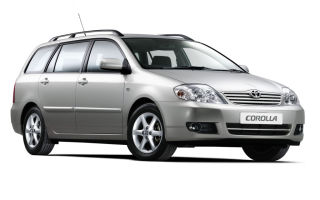Technical characteristics of Toyota Corolla / Toyota Corolla cars
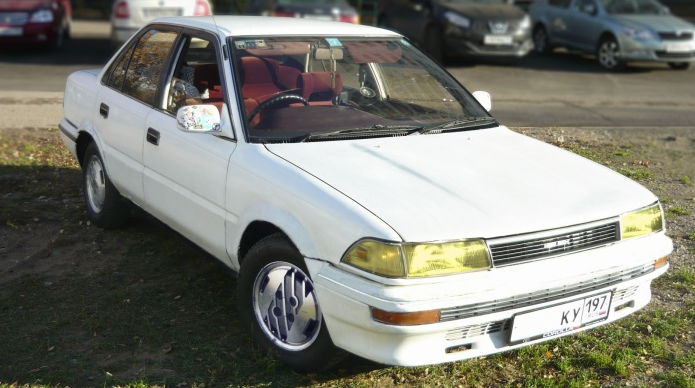
Toyota Corolla (E17(2016)) 2016 – present gg.
Toyota Corolla (E17) 2013 – 2016
Toyota Corolla (E16) 2013 – present gg.
Toyota Corolla ((EU)E16) 2013 – present gg.
Toyota Corolla (E15(2010)) 2010 – 2013
Make and modificationBody typeVolumePowerExhaust| Toyota Corolla 1.8 | sedan (4 doors) | 1800 cm3 | 132 hp | 2010 – present |
Toyota Corolla ((EU)E14(2010)) 2010 – 2013
Toyota Corolla (E15) 2007 – 2010
Toyota Corolla (E10) 1995 – 1997
| Toyota Corolla 1.3 | sedan (4 doors) | 1332 cm3 | 75 hp | 07.1995 – 12.1997 |
| 1990 | 2000 | 2010 | ||||||||||||||||||||||||
| 2 | 3 | 4 | 5 | 6 | 7 | 8 | 9 | 1 | 2 | 3 | 4 | 5 | 6 | 7 | 8 | 9 | 1 | 2 | 3 | 4 | 5 | 6 | 7 | 8 | ||
| AE10_(S4) | ||||||||||||||||||||||||||
| E10 (S4) | ||||||||||||||||||||||||||
| E11 (HB3, HB5, MPV5, S4, SW5) | ||||||||||||||||||||||||||
| E11(2000) (HB3, HB5, S4, SW5) | ||||||||||||||||||||||||||
| E12 (HB5, MPV5, S4, SW5) | ||||||||||||||||||||||||||
| (EU)E12 (HB3, HB5, MPV5, S4, SW5) | ||||||||||||||||||||||||||
| (EU)E12(2004) (HB3, HB5, MPV5, S4, SW5) | ||||||||||||||||||||||||||
| E12(2004) (HB5, MPV5, S4, SW5) | ||||||||||||||||||||||||||
| E14 (MPV4, S4, SW5) | ||||||||||||||||||||||||||
| (EU)E14 (S4) | ||||||||||||||||||||||||||
| (EU)E12(2007) (MPV5) | ||||||||||||||||||||||||||
| E15 (S4) | ||||||||||||||||||||||||||
| E15(2010) (S4) | ||||||||||||||||||||||||||
| (EU)E14(2010) (S4) | ||||||||||||||||||||||||||
| (EU)E16 (S4) | ||||||||||||||||||||||||||
| E16 (S4) | ||||||||||||||||||||||||||
| E17 (S4) | ||||||||||||||||||||||||||
| E17(2016) (S4) |
The automobile catalog contains descriptions, technical characteristics and photographs of Toyota Corolla / Toyota Corolla cars produced since 1997.
Reviews from Toyota Corolla owners
- There are no robot boxes on the list. Naturally, 5 cars. - this is a robot. The car is about one and a half years old, the mileage is sufficient to judge the quality. This is not my first foreign car, so I’m judging based on the qualities of a real car, and not imitations. We are talking about Sol MMT. Overall good 4+ in all respects. I like the interior, I especially like sitting in the back, it’s good. Seats for 4, a bench, but excellent, but a bench. It steers at 4, sometimes at speed when the steering wheel is moved sharply, it pulls the rear, it can skid, but this is more than 90 km/h (it has never skidded). The dashboard is simply excellent, there are a lot of boxes, and they are full...read more
- ugh ugh I drive every day and a lot but there are no problems at all. Evil tongues claim that the robot is twitchy - it’s all lies. The Schumachers are probably the only ones around, or our journalists are completely greedy. normal box - drive like normal people and don’t jerk yourself. The design is good - not tiida in any case. Looks more expensive than it's worth in terms of money. appetite is normal. The arches are a little noisy - I have no complaints about this, I've had noisier cars. If you have the opportunity, you should take it and not look back. However, I gained a lot of respect for Toyota last year. I'm still squealing in more detail
- *A car is not a luxury, but a means of transportation!* I’ll start with the fact that in the life of every car enthusiast there are two happy moments: when he buys a car, and when he sells it. I started my driving experience with a ZAZ Tavria car. A year later, I had the opportunity to finally purchase a foreign car, a Toyota Corolla. She came across an advertisement in the newspaper, and her father found her. I bought it for 35 thousand rubles. in 2008 and it's worth it. I think the price and quality are quite acceptable. Her mileage was approximately 371,000. When only...read more
Source: http://www.AutoNet.ru/auto/ttx/toyota/corolla
Toyota Corolla (E120): photos, characteristics, reviews:
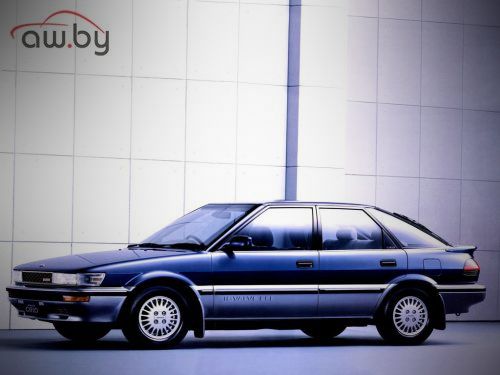
The first generation of the famous Japanese car Toyota Corolla began in 1966. At that time, this car was produced exclusively for the domestic market.
Now cars known under such a sonorous name are sold all over the world. There are currently 11 generations of this model. Now I would like to talk in detail about the ninth.
Cars that are representatives of this generation are known as the Toyota Corolla E120.
Briefly about the model
The car was presented to the general public in Japan in November 2000. The car has become more technologically advanced, and has also changed in appearance - the body, in comparison with the E110, has turned out to be sharper and more modern.
The model has also increased its dimensions a little. If the 8th generation sedans reached 4,295 mm in length, then for new products this figure was 4,315 mm. Width, height, ground clearance and wheelbase remained unchanged. But the developers worked hard to reduce weight. The gross weight of the 8th generation sedans was 1,615 kg, and that of the new product was 1,580 kg.
It is important to note that the Toyota Corolla E120 has become one of the most popular models ever produced by the Japanese manufacturer. In 2002, she even received the “Car of the Year” award according to What Car magazine.
Equipment
The Toyota Corolla E120 was offered to potential buyers in two trim levels, one of which was basic (Terra), and the other (Sol) was “charged”.
The standard equipment package seemed quite solid for the early 2000s. It included electric side mirrors in body color, heated rear window, telescopic and vertical steering wheel adjustment, the ability to manually adjust the seats, and central locking.
But that is not all.
Also included in the basic package were automatic heated front seats, power windows, airbags (driver, passenger and side), ISOFIX mount, door stiffeners, tensioner and seat belt retainer with pretensioners. In addition, there was ABS, EBD, air conditioning, CD player, radio antenna, 4 speakers, on-board computer, immobilizer and even a spare tire.
In the “charged” configuration, of course, everything listed was also included.
But it also added climate control, fog lights, audio controls on the steering wheel (with leather braid), curtain airbags and airbags with a deactivation function, rear parking sensors, a CD changer, 6 speakers, a rain sensor and a self-dimming rearview mirror. By the way, even versions in the Sol configuration had a high-strength body.
Comfort
A few words should be said about the interior of the Toyota Corolla E120. There is nothing unusual about it, but everything is as convenient and ergonomic as possible. And the build quality is also high - the developers paid special attention to it.
People who own this car are pleased to note the absence of “crickets” and strange creaks in the cabin.
As the owners say, the interior is made in such a way that the driver feels comfortable in it, and not so that those passing by or driving by have a desire to examine everything from the inside.
The E120 has excellent seats with lateral and lumbar support; sitting comfortably and pleasantly. The same can be said about the back row sofa. By the way, three people can comfortably fit there – no one has to be crowded and feel disadvantaged.
It is also impossible not to note the good sound insulation of this car. The cabin is quiet even at high speeds.
What about the trunk? He's more than decent. Although, looking at the dimensions of the Toyota Corolla E120, you won’t be able to tell right away.
The sedan's 437-liter trunk is very spacious, and many owners of this model call it one of its main advantages. Although the hatchback can accommodate only 289 liters.
But this is without folded seats! If you turn the back row into a flat floor, the trunk volume will immediately increase to 1,100 liters.
Gasoline engines
The Toyota Corolla E120 was offered to potential buyers with various powertrains. And first of all, it’s worth talking about gasoline ones.
The weakest was the 1.3-liter 88-horsepower injection engine, which could be paired with either a 5-speed manual or a 4-speed automatic. With this engine, the car accelerated to “hundreds” in 12.8 seconds, and its maximum was limited to 170 km/h. Consumption in the combined cycle was about 5-6 liters per 100 km.
Next in power was a 1.4-liter 97-horsepower unit, offered only with a 5-speed manual transmission. A car with this engine reached 100 km/h 11.8 seconds after the start, and its maximum was limited to 185 km/h. On average, this unit consumed 7 liters.
The “golden mean” among engines was the 110-horsepower 1.6-liter engine, offered with a 5-speed manual transmission. Acceleration to “hundreds” took 10 seconds, and the maximum was limited to 195 km/h. The average consumption was also 7 liters.
The E120 was also offered with a 1.8-liter 136-horsepower engine. It was offered with a 5-speed manual transmission and a 4-speed automatic transmission. A car with this unit accelerated to “hundreds” in 10 seconds, the maximum limit was 200 km/h. On average it took 10 liters per 100 kilometers.
The most powerful was the 1.8-liter 190-horsepower unit. It was similar to the previous one, but was distinguished by high speed and lower consumption.
Diesel units
They are also worth noting. The characteristics of the Toyota Corolla E120 with diesel engines can be called impressive.
Take, for example, the weakest unit. With a volume of 2.1 liters, it produced only 79 liters. With. But due to the presence of a turbocharger, cars with this engine accelerated to “hundreds” in 12 seconds, and their maximum was 170 km/h. Consumption, by the way, did not exceed 6 liters in the combined cycle. The engine could be paired with either a 5-speed manual transmission or a 4-speed automatic transmission.
The second engine, also equipped with a turbocharger, was more powerful. With a volume of 2 liters, it produced 90 liters. With. Cars with this unit accelerated to “hundreds” in 12.6 seconds, and their maximum was limited to 180 km/h. Combined cycle consumption was less than 6 liters.
It should be noted that the Toyota Corolla E120, the photo of which is provided above, was also offered with other engines. But it’s not worth dwelling on them, since they were included in the versions subsequently sold on the domestic Japanese market. And modifications with all the listed engines were supplied to Europe.
Chassis
Interestingly, the Toyota Corolla E120, supplied to the Russian market, was equipped with a reinforced suspension and had a ground clearance increased to 170 millimeters. In general, in front of these models there was a shock absorber strut, a transverse stabilizer and a wishbone, + a coil spring. The rear has a similar design. Only, of course, without a shock absorber strut and with a coaxial shock absorber.
If you pay attention to the reviews of the owners, you will notice that even those people who prefer an aggressive driving style rarely changed anything until the mileage exceeded 100,000 km.
The only exceptions are the stabilizer struts and bushings. The supports remain intact even after replacing the shock absorber. And for many, the ball joints and silent blocks of the levers served for about 150,000 kilometers.
In general, the suspension can be characterized as energy-intensive. Not hard, but not soft either. Riding one is a real pleasure. But rough terrain and obvious road defects should still be avoided (especially with a loaded trunk).
Brake system
Even the owners pay special attention to it in their reviews. The 9th generation models are equipped with a hydraulic dual-circuit system. The brake discs of the Toyota Corolla E120 are not ventilated, but this makes them no less reliable.
It is worth noting one important nuance. Disc brakes are equipped with automatic adjustment, which is activated depending on the wear of the pads, which has a positive effect on vehicle control.
To stop this car, you don't need to put in a lot of effort and press the pedal all the way to the floor. The brakes are responsive and sensitive, which is another advantage of this car.
True, some will need time to get used to it, but motorists get used to it quickly.
Diesel engines in operation
When talking about the Toyota Corolla IX E120, reviews should also be noted with attention. They are the ones who can help you understand what a car really is, since they are based on practical experience of operation by real owners.
Many car enthusiasts at one time purchased an E120 with a diesel engine. Naturally, for economic reasons. And the consumption, if you believe their reviews, is really pleasing: even after many years of owning a car, 100 “city” kilometers do not consume more than 10 liters (and this is in winter). In addition, diesel engines have such advantages as reliability, unpretentiousness and a long service life.
People note that in severe frost (-30 and below), the car starts without problems, and in general the engine does not fail. With careful handling, the motor can serve for years without complaints.
But there are also disadvantages. Owners consider it a minus that diesel engines (both 79 hp and 90 hp) do not give the car any dynamics at all. Not bad for the city, but on the highway this car won’t even overtake one truck.
Owners about gasoline modifications
A few words should be said about them too. And as an example, it’s worth taking the Corolla with a 110-horsepower engine as the most common version on our roads.
The 1.6-liter unit, as the owners assure, is ideal for this car. 1.4 is rather weak - you have to turn the engine, which will ultimately lead to a decrease in its service life. And the 1.6 with VVT-i is an excellent unit. Traction is provided from the bottom to the top. By the way, it also has a timing chain, which is also a plus.
Of course, the engine also has some disadvantages, which are more likely related to nuances. This is high noise (due to the notorious timing chain), vibration present at idle and the ability to warm up the engine to operating temperature only while driving. In winter, it is not even recommended to stand with the engine running - it will only cool down.
Well, one more feature is consumption. You can’t call it small: 10-11 liters in the city and about 6 on the highway.
Service details
Continuing the story about the version with the most popular engine, it is worth noting that the engine is unpretentious. It easily consumes 92 gasoline and uses little oil.
In the Toyota Corolla E120 manual you can read that the engine capacity is 4.2 liters of oil. Many people simply take a 4-liter canister, pour it out entirely and drive until the next replacement (every 10,000 km). There is no need to top up - there is more than enough. By the way, TOYOTA 5w30 oil is recommended. According to many, this is the best option.
Car enthusiasts also recommend changing the air filter along with the oil. It is designed for 30,000 km, but it is better not to save on such a thing, given the “cleanliness” of the roads.
Price
Finally, a few words about the price. Production of this model was finally completed in 2007 - a year after the start of production of the 10th generation models (E130). Toyota Corolla E120, by the way, was produced for several months after the presentation of the new product.
Now this car can be bought used. The price of a 2006 model with a 110-horsepower gasoline engine is 300-400 thousand rubles.
Source: https://www.syl.ru/article/327860/toyota-corolla-e-foto-harakteristiki-otzyivyi
Review of Toyota Corolla 9 (Toyota Corolla) with mileage. Review
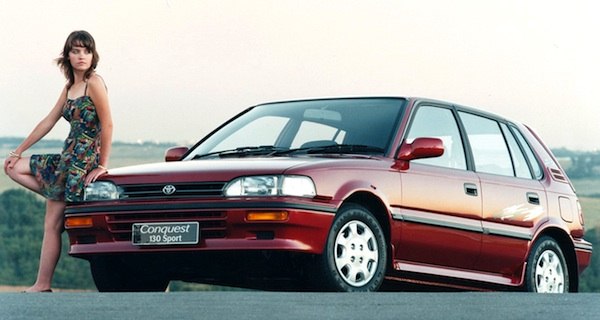
The ninth generation Toyota Corolla was developed in 2000, and had the factory designation E120 , the car went on sale in 2001, and was produced until 2006. The car was produced in three bodies: hatchback, sedan and station wagon.
Among car owners, it has earned itself the image of a simple and durable car that can please its owners for many years, but like any car it has its problems.
But what they are, and what you should pay attention to when choosing a used Toyota Corolla, now let’s try to figure it out.
Advantages and disadvantages of a used Toyota Corolla
Toyota Corolla for Europe and the CIS was mainly assembled outside of Japan; before restyling in 2004, hatchbacks were supplied from England, and station wagons and sedans from Turkey. Japanese sedans arrived at dealers in small quantities, and at first buyers were hunting for cars of this type, considering them to be of higher quality, but in fact this opinion is wrong.
So in reality, cars assembled in Turkey have their own minor problems, but they also occur in cars that were assembled in Japan. So, when choosing a used car, you should not pay special attention to its nationality; just decide on the engine size, body type and gearbox.
Most Toyota Corollas sold on the secondary market were purchased from official dealers, since cars imported from abroad cannot withstand competition in price, so if you come across a car from abroad, it is better to refuse such an acquisition, since it was bought there broken or in poor condition.
As for the body type, none of them have any characteristic problems.
Engines and transmission Toyota Corolla
The cars were equipped with one of the types of gasoline engines, 1.4 liter (97 hp), 1.6 (110 hp), 1.8 (136 hp), in addition to gasoline engines, you can also find a two-liter diesel engine (90 hp .).
As operating experience has shown, Toyota Corolla engines have proven to be quite reliable and durable and are capable of traveling more than 200,000 kilometers without causing any problems for owners.
But still, a third of owners encounter minor troubles, for example, at idle, engines operate noisily and harshly, this does not make them unreliable in terms of driving characteristics, but is simply such a feature. All power units are equipped with a timing chain drive, which does not require special maintenance.
On some models, rapid wear of the piston group cylinders occurs, a signal of this problem will be bluish smoke from the exhaust pipe, as well as increased oil consumption (up to 1 liter per 1000 km), repairing this problem will not be cheap, in the best case, you will have to replace the pistons with rings, at worst the whole engine.
When inspecting a used car, it is worth checking with the owner whether there was such a problem during the warranty period; perhaps it has already been fixed, but if not, you need to take a very responsible approach to diagnosing the engine of such a car.
Most ninth-generation Toyota Corolla cars have already exceeded 100,000 km of original mileage, so the above-mentioned problem was most likely experienced by the previous owner, or the car did not have it and most likely will not have it.
Before 200,000 km, you don’t have to worry about replacing the timing chain, but the tensioner will have to be replaced at 90-100 thousand km, and if the car has traveled more than 120,000 km, you should carefully monitor the oil level and keep it at the maximum level.
In terms of gearboxes, there are no preferences; during normal operation, the transmission of the Toyota Corolla is problem-free, you just need to service it on time, in the mechanics the oil is changed every 40,000 km, and in the automatic transmission every 80,000. The clutch lasts more than 100,000 kilometers, replacement will cost about 150 USD. . An automatic transmission lasts more than 200-250 thousand km; there are examples that last up to 600,000 kilometers.
Toyota Corolla suspension
When choosing a car, it is better to give preference to a car purchased from an official dealer, since cars for our market were equipped with reinforced suspension with increased ground clearance (17 cm).
In this suspension, even fans of active driving rarely changed parts up to 100,000 kilometers, with the only exception being the bushings and stabilizer struts, the supports remain intact even after replacing the shock absorber, the silent blocks of the levers and ball joints can last up to 150 thousand km.
As for the steering, sometimes it is necessary to replace the electric motor due to play, the rack can also knock, this problem is more common on cars of the first years of production, in principle the malfunction is not critical (plastic bushings knock), but if the knocking is very annoying, then repair you'll have to shell out a pretty penny. Also, enterprising owners eliminate this problem by wrapping the bushings in foil; such repairs will last no more than 50,000 km.
Electrical equipment
The electrical equipment in this car is generally quite reliable, but occasionally it can be a little capricious.
The most common cause of trouble is the sound signal, which can go off every once in a while (the reason for this is rotten wiring).
Once every hundred thousand kilometers you will have to change the starter bendix; the signal for it will be an empty buzz when you turn the key in the ignition, or the engine will start every other time.
Result:
It is worth noting that the Toyota Corolla is worth the money, the car is relatively comfortable, strong, reliable and not expensive to maintain. In the secondary market, the ninth generation is in steady demand and occupies quite high places in the reliability rating among used cars, and this is well deserved for the reason that the car has practically no weak points.
Advantages:
- Durable paint coating.
- Reliable engines
- Reliable and moderately soft suspension.
- Spacious salon.
- High-quality interior materials.
- Good sound insulation .
Flaws:
- Steering rack.
- Weak acceleration dynamics.
- Quite a high price on the secondary market.
If you are or were the owner of this car brand, please share your experience, indicating the strengths and weaknesses of the car. Perhaps your review will help others choose the right used car.
AutoAvenue
Source: https://www.avtoavenu.ru/toyota-corolla/
Toyota Corolla 2002 – 2007 – all information about the IX generation Toyota Corolla
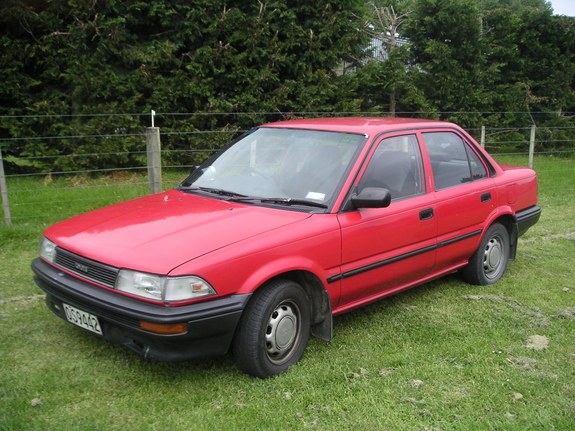
You are looking at a generation that is no longer on sale. More information about the model can be found on the latest generation page:
Latest generation Toyota Corolla
- width1 710mm
- length4 410mm
- height1 470mm
- clearance???
- seats5
| 1.4 D MT (90 hp) | DT | Front | 13.3 s | |
| 2.0 D MT (90 hp) | DT | Front | 4,9 / 7,4 | 12.6 s |
| 1.4 MT (97 hp) | AI-95 | Front | 5,8 / 8,4 | 12 s |
| 1.6 MT (110 hp) | AI-95 | Front | 6 / 9,2 | 10.2 s |
| 1.6 AT (110 hp) | AI-95 | Front | 6,4 / 10,6 | 11.8 s |
| 2.0 D MT (116 hp) | DT | Front | 4,7 / 7,3 | 10.9 s |
- width1 710mm
- length4 180mm
- height1 475mm
- clearance???
- seats5
| 2.0 D MT (90 hp) | DT | Front | 4,9 / 7,4 | 12.6 s |
| 1.4 MT (97 hp) | AI-95 | Front | 5,7 / 8,4 | 12 s |
| 1.6 MT (110 hp) | AI-95 | Front | 5,9 / 9 | 10.2 s |
| 1.6 AT (110 hp) | AI-95 | Front | 6,3 / 10,5 | 11.8 s |
| 2.0 D MT (116 hp) | DT | Front | 4,7 / 7,3 | 10.9 s |
| 1.8 MT (192 hp) | AI-95 | Front | 6,7 / 11,1 | 8.4 s |
- width1 710mm
- length4 180mm
- height1 475mm
- clearance???
- seats5
| 2.0 D MT (90 hp) | DT | Front | 4,8 / 7,2 | 12.6 s |
| 1.4 MT (97 hp) | AI-95 | Front | 5,7 / 8,4 | 12 s |
| 1.6 MT (110 hp) | AI-95 | Front | 5,9 / 9 | 10.2 s |
| 1.6 AT (110 hp) | AI-95 | Front | 6,3 / 10,5 | 11.8 s |
| 2.0 D MT (116 hp) | DT | Front | 4,7 / 7,3 | 10.9 s |
| 1.8 MT (192 hp) | AI-95 | Front | 6,7 / 11,1 | 8.4 s |
- width1 710mm
- length4 410mm
- height1 500mm
- clearance???
- seats5
| 1.4 D MT (90 hp) | DT | Front | 13.3 s | |
| 2.0 D MT (90 hp) | DT | Front | 5 / 7,4 | 12.6 s |
| 1.4 MT (97 hp) | AI-95 | Front | 5,8 / 8,4 | 12 s |
| 1.6 MT (110 hp) | AI-95 | Front | 6 / 9,2 | 10.2 s |
| 1.6 AT (110 hp) | AI-95 | Front | 6,4 / 10,6 | 11.8 s |
| 2.0 D MT (116 hp) | DT | Front | 4,7 / 7,3 | 10.9 s |
Source: http://www.MotorPage.ru/Toyota/Corolla/IX/
“Toyota” – models of the “Corolla” series (10 generations)
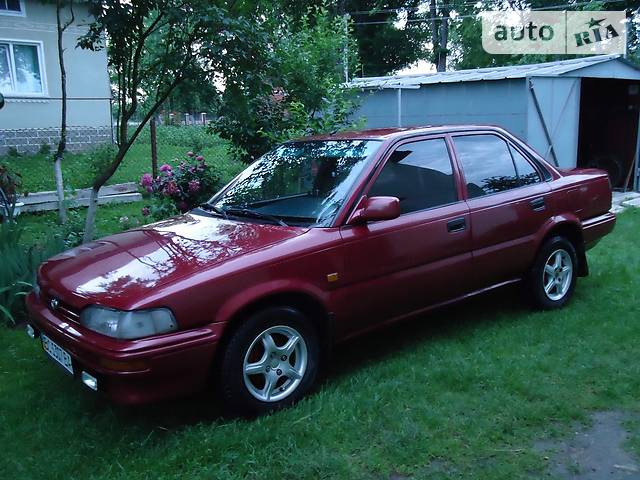
Toyota Corolla is one of the oldest models in the production program of the Japanese automobile industry. This brand dates back dozens of generations and is still in production today.
The first Toyota Corolla models were introduced back in the 60s. And it is worth noting that the name of the car has not been changed during this time.
Manufacturers relied on improving technical characteristics, improving the interior and exterior. And this led to the fact that after 50 years (in 2013.
) the new 11th generation Toyota Corolla E160 model was released, which, it is worth noting, is still being produced.
Over the years, Japanese quality has managed to prove itself only on the good side, so sales have currently reached a high figure of 40 million units. Now we can say that this car rightfully occupies the lead in the market and is the best-selling car in all countries of the world.
In the article, we will look at the history of the Toyota brand, what models it has produced throughout its history, and briefly outline their features and technical characteristics.
First generation – 60s
The history of the Toyota automobile brand began in 1966. It was then that the first E10 model was assembled. It was an inexpensive family car, quite unpretentious, but very practical. This Toyota (models at that time were standard) was produced in three body styles: coupe, sedan and station wagon.
The machine is equipped with an engine with a volume of 1.1–1.2 liters. Power varied from 60 to 78 horsepower. The usual manual transmission in some models was replaced with a dual-range automatic.
Assembly of the first generation Toyota Corolla E10 lasted for 4 years and was successfully sold in America, Japan and Australia.
Toyota Corolla in the 70s
These years were remembered for the fact that two generations, E20 and E30, were released over the decade. This was a big breakthrough for Toyota Motor Corporation, since they, while maintaining a low cost, were able to continue producing the Corolla model range.
Toyota presented different models. The E20 differed from the first generation in weight (900 kg) and body shape, which acquired some smoothness. The 8-valve engine was also improved, its volume now varied from 1.2 liters to 1.6 liters.
Accordingly, the power increased, reaching 115 horsepower. It was on this model that anti-roll bars were first installed, which significantly improved the suspension characteristics.
It is worth paying attention to the gearbox: the automatic has become three-speed, and the manual has become five-speed.
The Corolla E30 was released in 1974. No special changes were made to the car, only the wheelbase and the body increased slightly. However, this model was first exported to Europe, where almost immediately it was noticed by car enthusiasts.
Toyota Corolla in the 80s
During this decade, the company released the fourth, fifth and sixth generations of the Toyota car. Models and prices were slightly different from the old ones.
Toyota Corolla E70 is remembered for its abundance of body options. There were more than 5 of them: a coupe with a different number of doors, a sedan, a carriage, etc. Also, car enthusiasts were pleased with the engine parameters; diesel units with a volume of 1.8 liters were installed on this model for the first time. We cannot remain silent about the size: the length reached 4 meters.
Toyota Corolla E80 appeared in 1983. This brand is represented by a hatchback. Due to the fact that it was front-wheel drive, it became possible to produce a series of sports cars.
In 1987, the Corolla was introduced with a new E90 body. It had a length of 4326 m, a “car” type and a forced engine equipped with a compressor, on the 4A-GZE platform. It was on this model that the manufacturer was able to completely abandon the rear-wheel drive configuration.
Currently, cars of this generation are sold for $1000-2000.
Toyota Corolla in the 90s
Toyota, models E100 and E110 belong to the 7th and 8th generations, and continued to produce the Corolla series in the 90s. In 1991, a new car with a smooth and rounded body and increased length saw the light of day. The E100 model received the ADAC award and was named the most reliable and safe.
In 1995, the eighth generation of the E110 car debuted. However, in 1999, the car was already restyled and made some technical improvements. It is reliable, so this generation can be very often found on the roads today. The price of the car is about 6,000 dollars.
Toyota Corolla (1999 – 2006)
Externally, the Corolla looks smart and quite modern for its age. After restyling, the rounded headlights disappeared. They were combined into one light block. The front turn signals, which are mounted into the end of the wings, look interesting. The design of the car, like all models of the Japanese manufacturer of that period, is very calm and restrained.
When viewed in profile, the Toyota (models E120, E140) looks quite large. The slightly rising glazing line adds a dash of speed to the look.
It should be noted that in this generation the developers excluded the five-door hatchback from the model range; only a liftback body is available. The sedan's rather large trunk overhang is striking. But everything looks harmonious.
The rear exterior of the car is decorated with large optical light blocks. Moreover, each body type has its own.
If we talk about the interior, it is Japanese-style and very comfortable. The dashboard is quite informative; round indicators convey to the driver the maximum required information.
The center console is slightly turned towards the driver, which is very convenient to use. Like the exterior, the interior decoration is very restrained, but looks solid and strict.
The trunk of a car, which looks quite large from the outside, is just that, especially in a sedan.
Technical part of 9th and 10th generations
The cars were equipped with gasoline power units of 1400 and 1600 cm3, as well as a 1300 cc twelve-valve engine. There were also diesel engines that were not widely used. Each of the power plants has a fairly high liter power rating.
It became possible to obtain them using 16-valve cylinder heads. Thanks to Toyota’s VVT-I variable valve timing system, which was installed on all cars after restyling, they demonstrate high fuel efficiency. The cars were equipped with five-speed manual or automatic transmissions.
However, a six-speed gearbox could be installed upon request for the three-door version.
Both front and rear the car has independent wheel suspension, which is equipped with anti-roll bars. Moreover, all elements have a long service life even on bad roads.
The machine has rack and pinion steering, which in any configuration is equipped with a hydraulic booster. Disc brakes are mounted on the front axle, and drum brakes are mounted on the rear axle, but sometimes disc brakes are also found.
In the latter case, the cars were equipped with an anti-lock braking system, which significantly helps in critical situations.
Source: http://fb.ru/article/223252/toyota—modeli-serii-korolla-pokoleniy
Toyota Corolla 2011 review
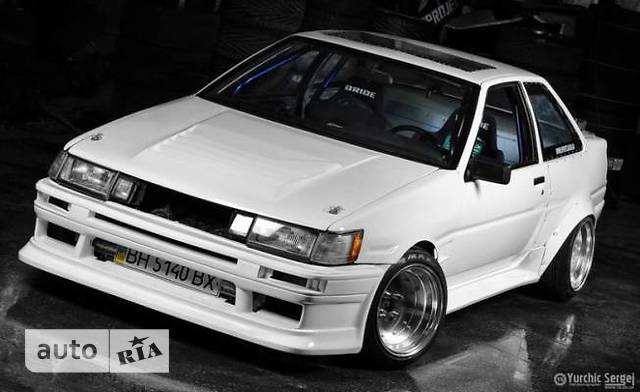
Toyota Corolla 2011 was first presented in Los Angeles at the Motor Show. The new car has many improved parameters, such as: interior and exterior design, as well as fuel consumption and safety. The 2011 Toyota Corolla is a sedan, available in three versions: “CE” - basic, “LE” - comfortable, “S” - sporty.
Technical characteristics of Toyota Corolla 2011 are presented in the following table:
| Technical characteristics of Toyota Corolla 2011 (Toyota Corolla 2011) | MCP | automatic transmission |
| Engine | Petrol, 1800 cc | |
| Average fuel consumption, l per 100 km (in urban mode) | 8,4 | 9,0 |
| Torque, Nm/rpm.
|
170/4400 | |
| Transmission | 5-speed manual |
4-speed automatic, |
| type of drive | Front | |
| Power, kW (hp)/rpm
|
132/6000 | |
| Overall dimensions, mm | 4545?1760×1470 |
Exterior
The 2011 Toyota Corolla has a sportier look thanks to a number of exterior changes. For design comparison, below are the 2010 and 2011 models:
Photos of Corolla 2010
Photo Corolla 2011 The design was created with the participation of Italian designers in Turin. The headlights, radiator grille, trunk lid, front and rear bumpers have undergone design changes.
Front view
Rear view The striking 16-inch wheels give the car special expressive features.
Side view
Interior
The interior of the 2011 Toyota Corolla has also changed. The design of the steering wheel, which has become slightly flattened at the bottom, and the new color of the seats of the 2011 Toyota Corolla “S” modification emphasize its sporty style.
The instrument panel has become clearer and clearer, which, in turn, helps the driver navigate the vehicle’s operating modes.
The information display displays various information, including air temperature, average speed, driving distance, average fuel consumption, driving distance.
Dashboard
The spacious rear seat can accommodate three adult passengers as comfortably as possible.
Backseat
The modified exhaust system, which allows for a virtually flat floor in the cabin, improves comfort for the middle rear seat passenger. The Toyota Corolla 2011 interior is equipped with many compartments for the convenience of passengers.
Driver's seat side view
Additional standard options for the 2011 Toyota Corolla:
Safety: - Traction control system (TRAC) - Anti-lock brake system (ABS) - Tire pressure monitoring system - Driver and passenger airbag - Brake force distribution (EBD) - Brake assist system (Smart Stop) - Vehicle stability control (VSC) )
Exterior:
— Large exterior mirrors — 16-inch alloy wheels Lighting: — Rear lights with high-quality lenses
Interior:
— Leather steering wheel and gear knob - Fabric upholstery
Comfort
— Heated side mirrors — Flat rear floor — Climate control system — Cruise control system
Acoustic system
— car radio with MP3 support, 4 speakers.
Prices
Prices for Toyota Corolla 2011: — basic manual transmission from 471,000 rubles; — basic automatic transmission equipment from RUB 495,000; — automatic transmission equipment “LE” from 522,000 rubles; — manual transmission equipment “S” from 527,000 rubles; — automatic transmission equipment “S” from RUB 551,000.
Reviews found online:
Good: Economical, modern design, very large trunk, nice spacious interior.
Badly:
Too wide stance, insufficient engine power.
Video An overview in English is presented in the following video:
Test drive of Toyota Corolla 2011 “LE” configuration in English:
Source: http://avtonam.ru/toyota/obzor-toyota-corolla-2011/


